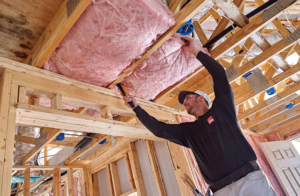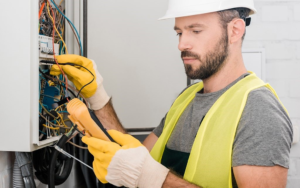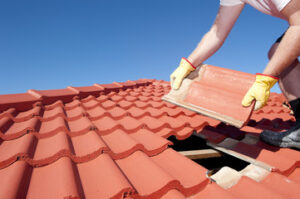Replacement Windows Potomac can add beauty and boost your home’s energy efficiency. They are available in a wide range of styles to match your home’s architecture and interior design.

Leak-proof frames, long-lasting hardware and insulated glass are all important features in windows that last. New windows are also designed to save you time and money with minimal maintenance.
A bay or bow window adds a unique architectural element to your home’s exterior, and it can also provide extra space inside for a cozy reading nook or seating area. Both types of windows provide increased natural light, which can help lower your energy bills and enhance your family’s health by lowering Seasonal Affective Disorder symptoms.
Bay windows have three glass panes arranged in an angular shape, while bow windows have four or more windows arranged in a gentle arc. Both options can transform a room into an interesting space and increase your home’s overall value.
If you’re looking to install a new bay or bow window, you’ll need to consider the level of functionality and customization you want. How you plan to use the space around your bay or bow window should play a major role in your decision, and you’ll also need to think about air flow and ventilation. Operable windows, such as casement or double-hung, are available for both types of bay and bow windows, which can give you the option to let in fresh air or close off the area when it’s time for privacy.
Both types of bay and bow windows are designed with solid wood mullions to provide superior structural integrity and prevent warping or bending. The insulating core of the window is made from high-density polyisocyanurate, and the head and seat feature furniture-grade 1-1/4’’ hardwood veneer plywood for beauty and durability.
You can choose from a variety of trim styles, moldings and other accessories to personalize your bay or bow window. In addition, the bay and bow windows are well insulated to maintain indoor temperatures throughout the year and minimize energy loss.
Casement Windows
When homeowners are ready for a window upgrade, they often turn to casement windows. This window style offers a great blend of beauty and functionality, making it a perfect fit for new homes and renovation projects alike.
They offer unobstructed views and provide a greater sense of connection to the outdoors. Additionally, since they open outward, they can function like a funnel for fresh breezes, reducing indoor humidity and airborne pollutants.
Like many other replacement window styles, casement windows are available in a variety of frame materials to suit homeowners’ aesthetic preferences and budget considerations. Wood, fiberglass, aluminum, and vinyl are all popular choices, each with its own unique benefits and disadvantages.
Because they require exterior space to operate, casement windows may not be a good choice for homes with limited outside clearance. They also tend to operate more slowly than sliding and double-hung windows, which can be frustrating for some.
Additionally, casement windows can be vulnerable to breakage if they are left open during strong wind storms. This is particularly true if the window is located near a roof or wall.
Homeowners can prevent this by ensuring that they close and lock their casement windows when not in use. In addition, they can replace older caulking with silicone to keep their windows tightly sealed and prevent drafts. If they notice signs that their casement windows are wearing out, such as a lack of proper shutting or a drafty feeling, this is a good indication it’s time for replacements.
Double-Hung Windows
Double hung windows are the most popular window type on the market and a great option for your home. These windows combine classic beauty with world-class performance. They are available in multiple styles and frame materials. They are also energy efficient, and many models come with ENERGY STAR ratings. These windows are easy to maintain, and they look new for years.
They may require lubrication on the tracks and hinges occasionally. They can be difficult to open and close when a draft is present, which is often caused by an improperly sealed installation. They obstruct the view a bit more than sliders and bay or bow windows, which can be an issue if you want a clear look at your yard.
Both the lower and upper sash can be opened in a double hung window, unlike single hung windows, which only allow for ventilation through the bottom sash. The lower sash is also easier to clean than the top. In addition, double hung windows can be manufactured with tilt-in sashes, which makes cleaning those hard to reach areas on the second floor of your home easier and safer.
These windows are also available in a wide range of shades, making them easy to match your home’s color and design scheme. Harvey’s Acclaim double hung windows are available in vinyl and natural wood, giving you a choice of modern or traditional style.
When choosing a window, it’s important to weigh your options carefully. A professional can help you decide what types of windows are best for your home. Get started by scheduling a free consultation, either in-home or online. We look forward to helping you turn your house into the home of your dreams.
Single-Hung Windows
Featuring a fixed upper window and a bottom window that moves vertically, single-hung windows offer a wide range of advantages for homeowners. Among them, they’re one of the most affordable window options available. They’re also easy to operate and provide adequate ventilation. Additionally, single-hung windows can be equipped with double or triple glazing for improved energy efficiency and insulation.
The frame of a single-hung window is typically made from wood, vinyl or aluminum. Each material option offers its own unique benefits in terms of aesthetics, durability and maintenance costs. For example, wood windows offer a classic and natural look but may require regular upkeep to prevent rot or insect damage, while vinyl and aluminum frames are durable and offer a high level of thermal performance.
Single-hung windows open by sliding the bottom window sash up, allowing for increased ventilation and airflow. This operating sash is often tilted in for easy cleaning from the inside. However, because of their limited top sash opening, single-hung windows can be less effective for areas that require substantial air flow or homes in hot climates.
In addition, their simple design and operation mechanisms may not be as user-friendly for those with mobility issues or limited reach, requiring more effort to open and close the bottom sash than other window types. Therefore, they’re best suited for locations on lower floors of a home.
Like their double-hung counterparts, single-hung windows are available in a range of styles and finishes to complement any architectural style or homeowner preference. They can also be fitted with advanced locking mechanisms for added security. With fewer moving parts, they’re also less prone to mechanical failure or wear and tear over time.
Vertical Sliding Windows
Horizontal sliding windows, also known as sash windows, feature vertically moving frames that allow air to flow into your home. This type of window combines traditional design elements with modern features for exceptional functionality and performance.
This is a popular choice for both new and renovated homes, providing an unobstructed view of the outdoors. These windows are easier to open than double-hung windows and require less clearance space on either side. They are available in a variety of sizes to fit nearly any space, making them suitable for both contemporary and traditional homes.
Another benefit of horizontal sliding windows is that they can be cleaned easily from inside the home. The sashes can be opened and tilted for cleaning, which makes them an excellent choice for homeowners with children and pets. They are also safer than most other operational windows as they can be locked with the bottom sash and opened only at the top, which helps prevent young children from falling out of the window.
Sliding windows are a great option for homes in conservation areas because they are designed to retain the original aesthetic of your property while still delivering the benefits of energy efficiency and improved functionality. They are also a perfect fit for modern homes because they can be installed without the need for bulky trims.
While both double-hung windows and sliding windows can provide improved ventilation, they are not interchangeable. The main difference between these two windows is that double-hung windows can be opened from the top or the bottom, whereas sliding windows slide horizontally within the frame. This can be important for those who need to reach a higher spot in their home, such as children’s bedrooms or the living room.








